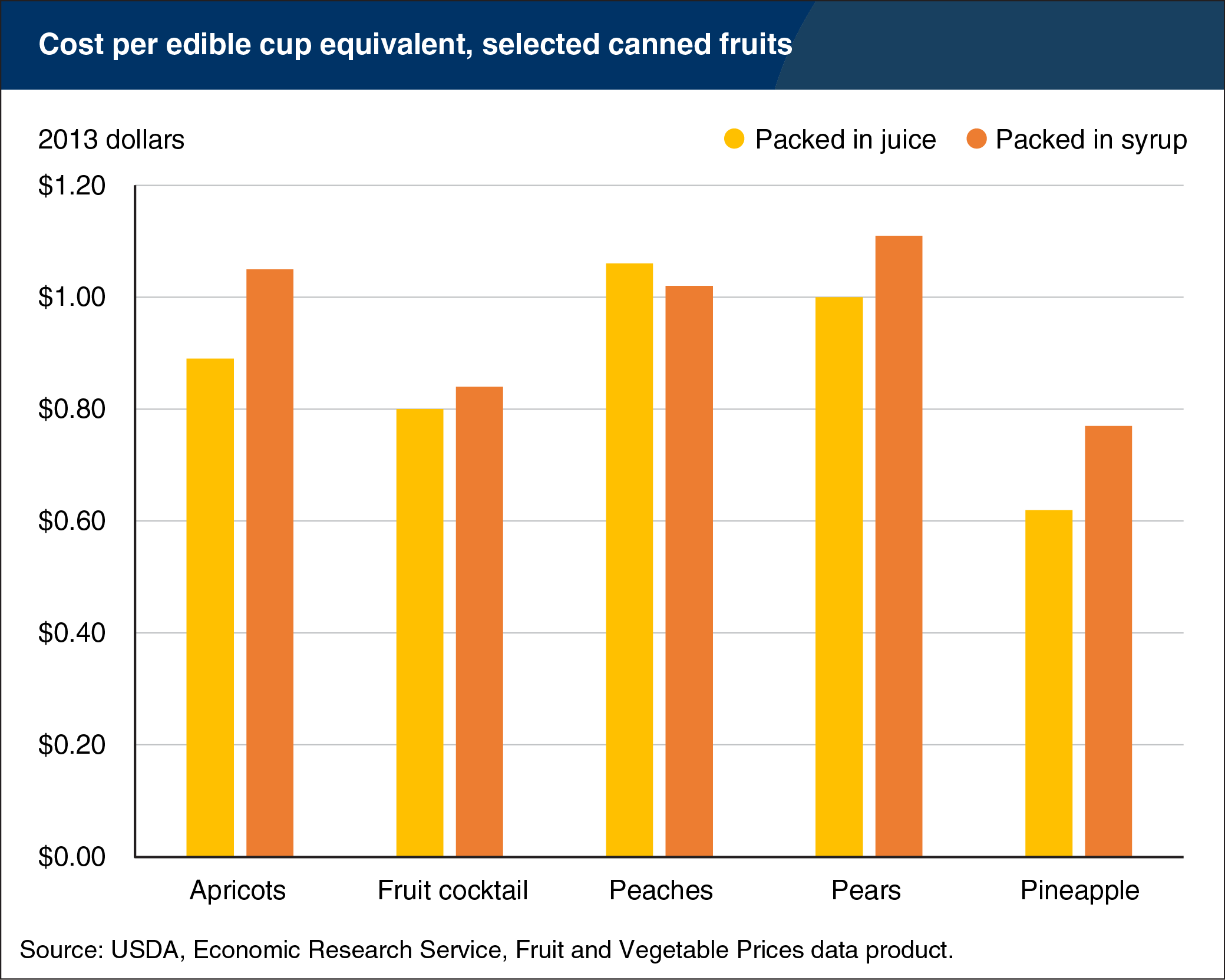Canned fruit isn't more expensive when packed in juice
- by Hayden Stewart
- 3/7/2016

Canned fruits account for about 10 percent of all fruit consumed by Americans. Canned products can be convenient and available when fresh products are out of season. When buying canned fruit, ChooseMyPlate—USDA’s campaign to promote the Dietary Guidelines—recommends choosing fruit packed in 100-percent juice rather than syrup. Looking at grocery store shelf prices, consumers might believe that fruit packed in syrup is the less expensive option, but this is generally not the case. Five canned fruits in the ERS Fruit and Vegetable Prices data product—apricots, peaches, pears, pineapples, and fruit cocktail—were more expensive to buy at retail stores on a per-pound basis when packed in juice. However, because consuming juice counts towards an individual’s recommended fruit intake, four of these products were cheaper on a per-edible-cup-equivalent basis when packed in juice. An edible cup equivalent of fruit is generally the edible portion of a food that would fill a 1-cup measuring cup. This chart is based on the recent ERS report, The Cost of Satisfying Fruit and Vegetable Recommendations in the Dietary Guidelines released on February 26, 2016.

